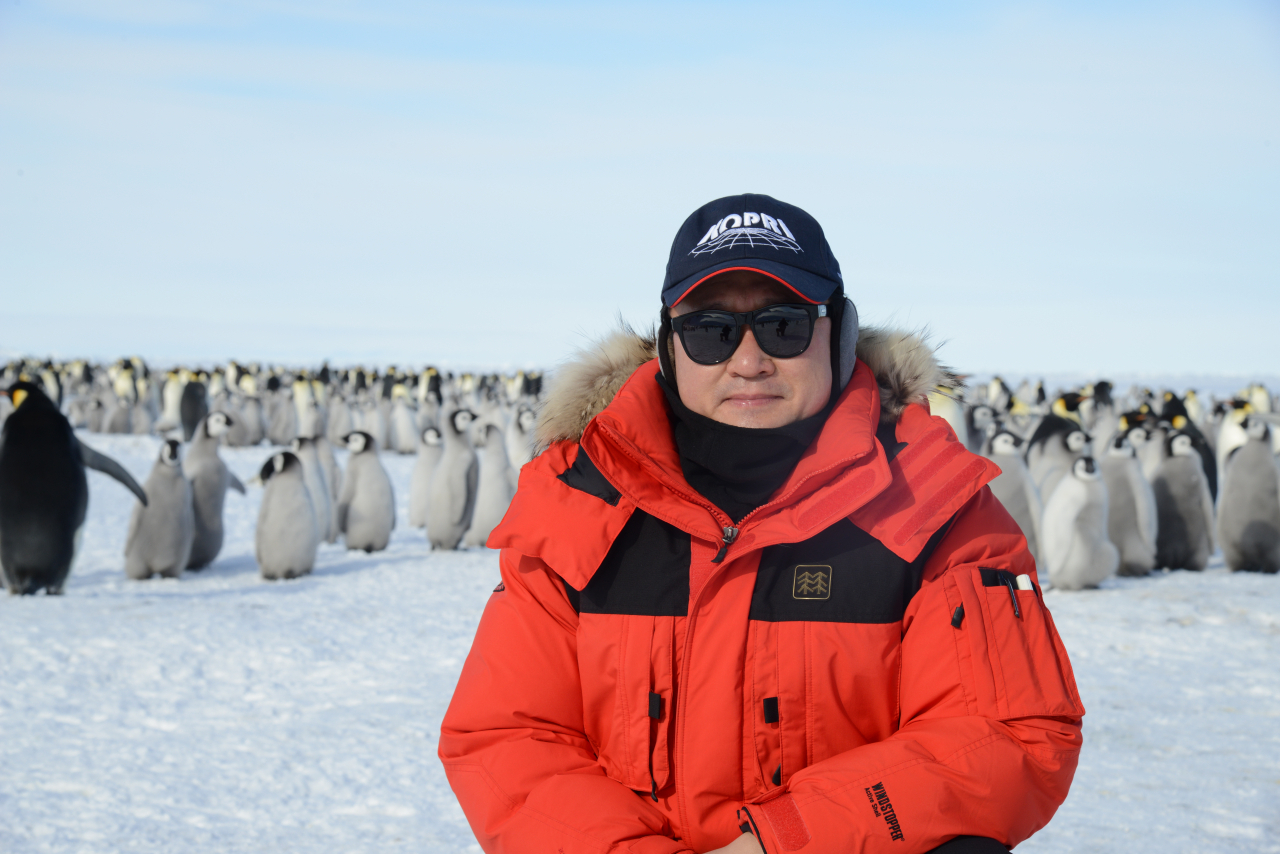[Herald Interview] 'Antarctica, a savior to the future of the Earth'
President of global research organization SCAR says climate change, limiting tourism main agenda in next Antarctic Treaty meeting
By Kim So-hyunPublished : March 13, 2023 - 15:29

In the 2009 movie “Avatar,” set in the year 2154, the Earth’s natural resources have been depleted, so people explore another star system to mine a valuable mineral.
But before going to outer space, mankind can rely on Antarctica, a well-preserved continent twice the size of Australia, and the vast Southern Ocean -- also called the Antarctic Ocean -- around it, rich in water, food and mineral resources.
The kilometers-thick ice and snow covering the continent hold in store the history of our planet, which can give us cues about its future, especially climate change.
“All activities relating to Antarctic mineral resources, except for scientific research, are banned until 2047 under the Protocol on Environmental Protection to the Antarctic Treaty, but fishing is allowed up to certain levels set by the Convention for the Conservation of Antarctic Marine Living Resources,” Dr. Kim Yea-dong, president of the Scientific Committee on Antarctic Research, said in an interview last week with The Korea Herald. SCAR is an interdisciplinary body that coordinates international scientific research efforts in Antarctica including the Southern Ocean.
The sustainable level of annual Antarctic krill catch is estimated to be between 100 and 200 million metric tons, and South Korea is among the countries that haul the most Patagonian toothfish in the Southern Ocean, according to Kim.
The former two-term chief of the Korea Polar Research Institute was the first South Korean to set foot on Antarctica in 1983. He led the project to build Korea’s second Antarctic research station Jang Bogo in 2014, and was elected in 2021 to president of SCAR which has 46 member countries.
As an observer at the annual Antarctic Treaty Consultative Meeting, SCAR provides independent advice to the ATCMs, and international bodies such as the Intergovernmental Panel on Climate Change and the UN Framework Convention on Climate Change.
The main agenda of the upcoming ATCM in May in the Finnish capital of Helsinki, will involve climate change in Antarctica and related issues such as how to limit tourists to the natural reserve.
Currently, some 100,000 tourists visit Antarctica annually, according to Kim. Around a third of them are Americans, followed by the Chinese, along with 10 South Korean tourists who also visited recently.
The rise of tourism increases the risk of disrupting the continent’s fragile ecosystem by bringing in invasive species like nonnative crabs clinging on ships; disturbing its wildlife with human activity; and pollution. However, managing tourism on Antarctica is a complicated issue.
Presently, thousands of research and support personnel including those who stay through the austral winter season maintain over 80 research stations run by about 30 countries.
Most of them are located along or near the coast, which is warmer and easier for ship access. There are currently only five inland stations that belong to the US, Russia, France-Italy, Japan and China. South Korea aims to build the sixth inland station and its third research post in Antarctica after King Sejong and Jang Bogo, by 2030.
As inland stations are built on ice and snow that has accumulated for up to a million years and are some three kilometers thick, Korea plans to drill through the ice to analyze trapped air from prehistoric times for paleoclimate research.
Korea also seeks to drill down to subglacial lakes under some 2 kilometers of ice and sediments to study paleoclimates and primitive organisms like bacteria that live in the world's harshest environment as a proxy for extraterrestrial life.
South Korea plans to look into what is causing the Antarctic glaciers to melt, and forecast the rise of sea levels in 2030, 2050 and 2100.
The Antarctic Treaty system has been a model of international cooperation since the Cold War era, but a looming spillover of geopolitical issues has been worrying scientists including Kim since Russia’s invasion of Ukraine.
“When the Russian representative began his speech in the previous ATCM in Berlin (in May 2022), most member countries walked out. Only a few like China, India and South Africa remained,” Kim said.
Another major issue at the Berlin meeting was emperor penguins.
An overwhelming majority of countries felt there was sufficient scientific evidence that the world’s largest penguins are increasingly threatened by the effects of global warming, and will go extinct if not put under the special protection, but a formal decision was blocked by one party -- China. Beijing did not provide any explanations for this vote, but observers say that the country has often acted in a contrarian manner in international issues.
While the rest of the world has the United Nations, the region south of 60 degrees south latitude, which covers about a fifth of the Southern Hemisphere, is governed by the Antarctic Treaty. The treaty was initially signed by 12 countries in 1959, and currently acceded to by a total of 56 nations or “Parties to the Treaty."
Seven of the 12 initial signatories – Australia, New Zealand, Chile, Argentina, the UK, France and Norway – divided up the icy continent the size of China and India combined, and claimed their territory. However, the Antarctic Treaty put all territorial claims in abeyance, and stipulated that only peaceful and scientific activities are to be conducted on the continent.







![[Graphic News] More Koreans say they plan long-distance trips this year](http://res.heraldm.com/phpwas/restmb_idxmake.php?idx=644&simg=/content/image/2024/04/17/20240417050828_0.gif&u=)
![[KH Explains] Hyundai's full hybrid edge to pay off amid slow transition to pure EVs](http://res.heraldm.com/phpwas/restmb_idxmake.php?idx=644&simg=/content/image/2024/04/18/20240418050645_0.jpg&u=20240419100350)






![[From the Scene] Monks, Buddhists hail return of remains of Buddhas](http://res.heraldm.com/phpwas/restmb_idxmake.php?idx=652&simg=/content/image/2024/04/19/20240419050617_0.jpg&u=20240419175937)

![[KH Explains] Hyundai's full hybrid edge to pay off amid slow transition to pure EVs](http://res.heraldm.com/phpwas/restmb_idxmake.php?idx=652&simg=/content/image/2024/04/18/20240418050645_0.jpg&u=20240419100350)

![[Today’s K-pop] Illit drops debut single remix](http://res.heraldm.com/phpwas/restmb_idxmake.php?idx=642&simg=/content/image/2024/04/19/20240419050612_0.jpg&u=)